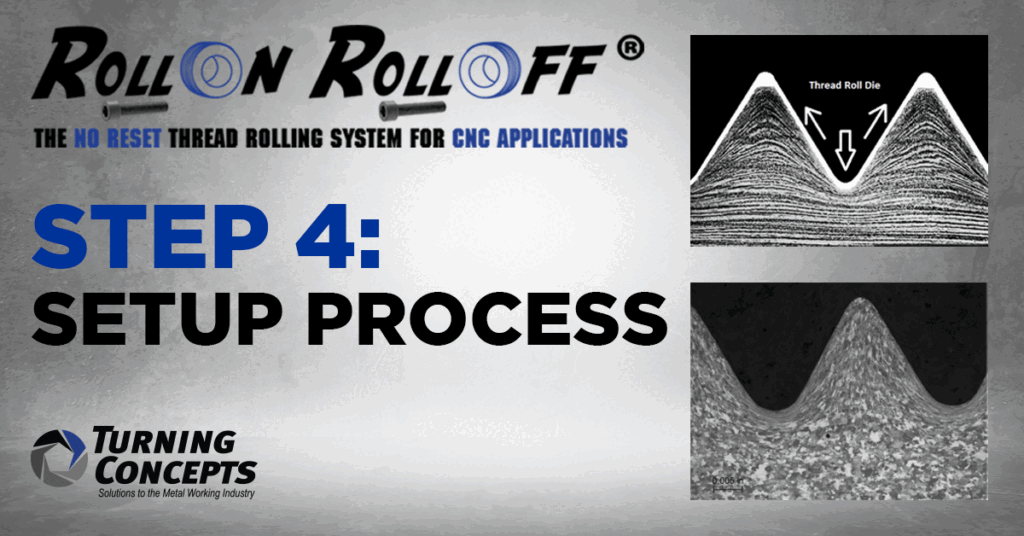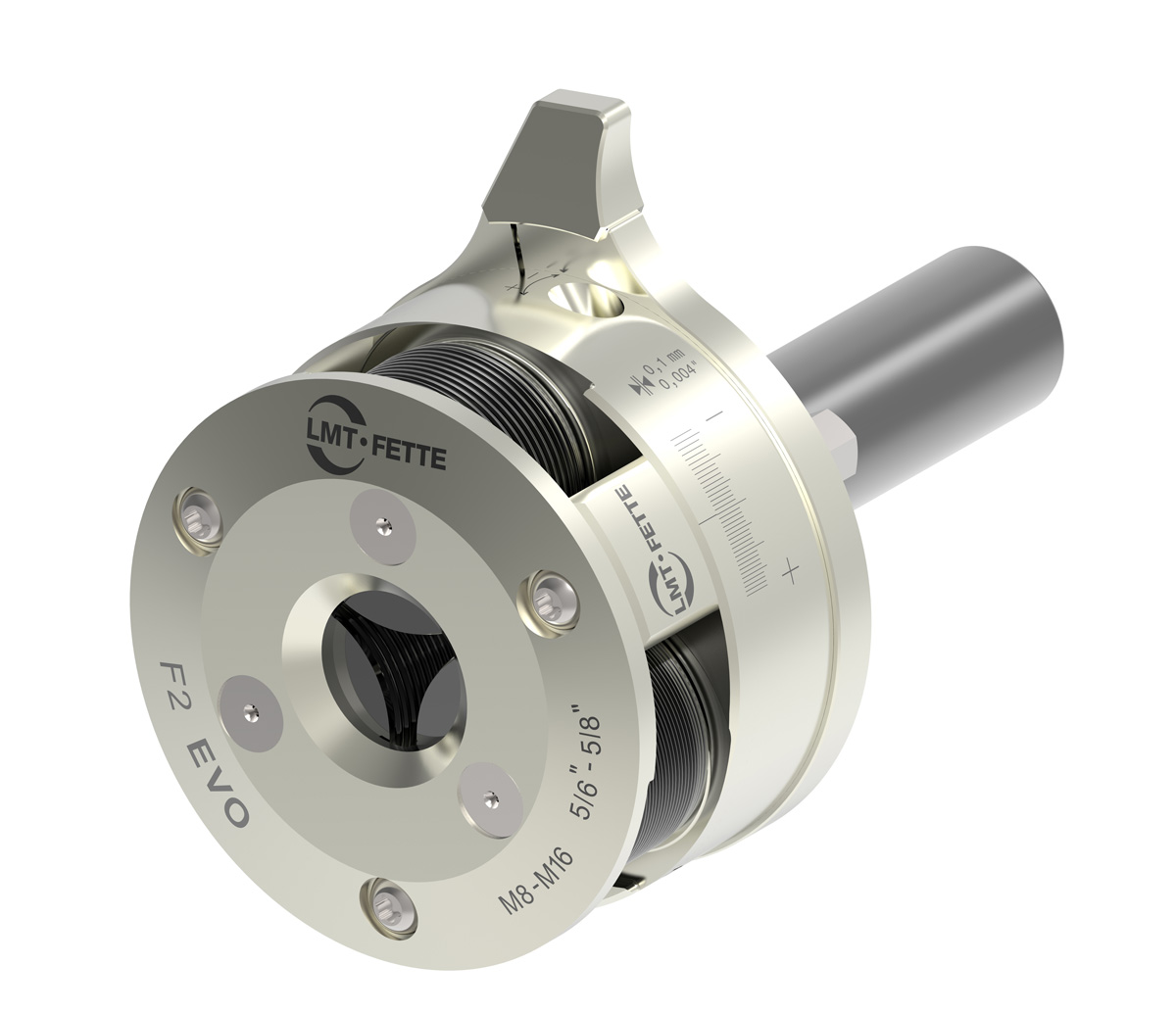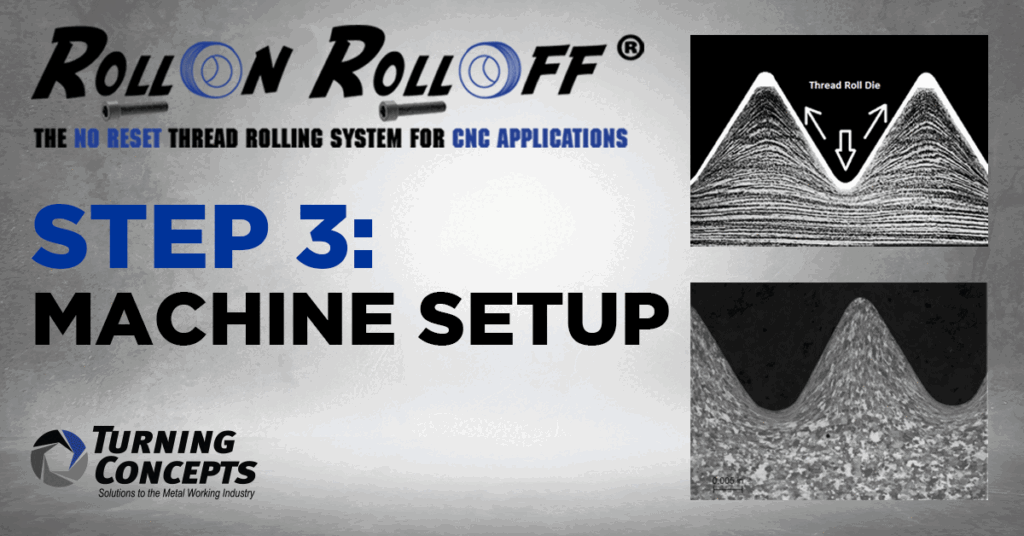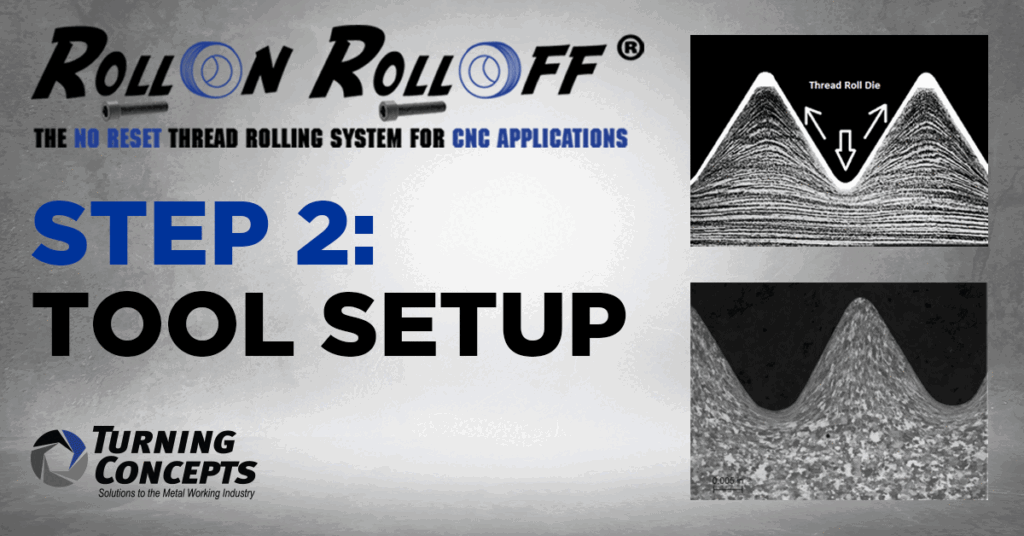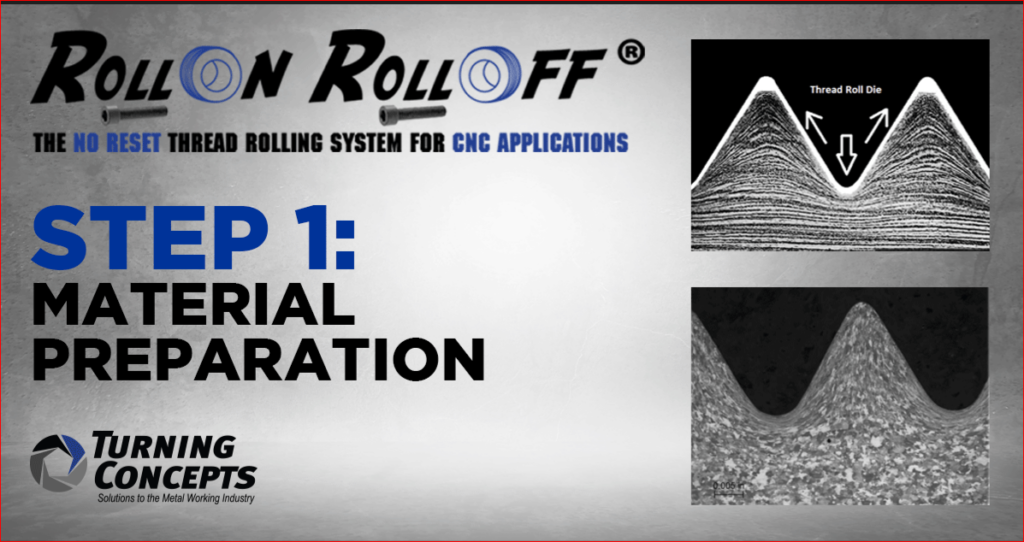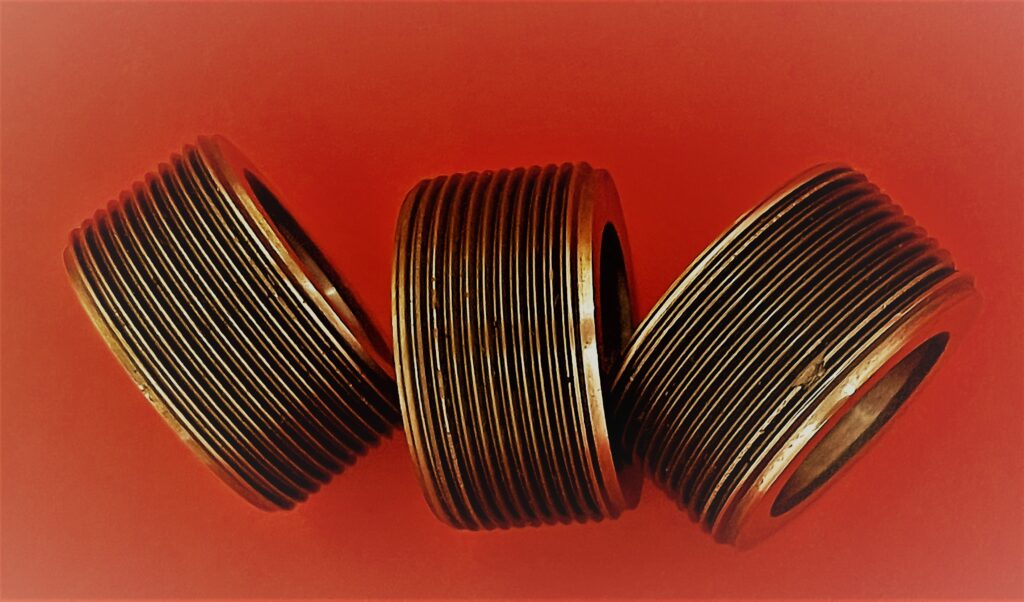The fourth step in proper rolling is setup of the Process.
Using sacrifice material- program a .600” length to test roll a .500” long part, Insure the material will not hit faceplate.
Pre-turn for rolling = Mean of the Pitch or .465”
30’ chamfer starting at .010” +0.0 -.020’ under the Min. Minor
Feed rate is Pitch less .001” or a proprietary calculated material dependent amount. Roll on and off at the same federate.
Sync tap (G84) works best. Std Tapping cycles and G34 with M03,04 spindle reverse- no dwell.
SFM- 125 SFM for low carbon steels, 100 SFM for SS and hi-nickel material.
